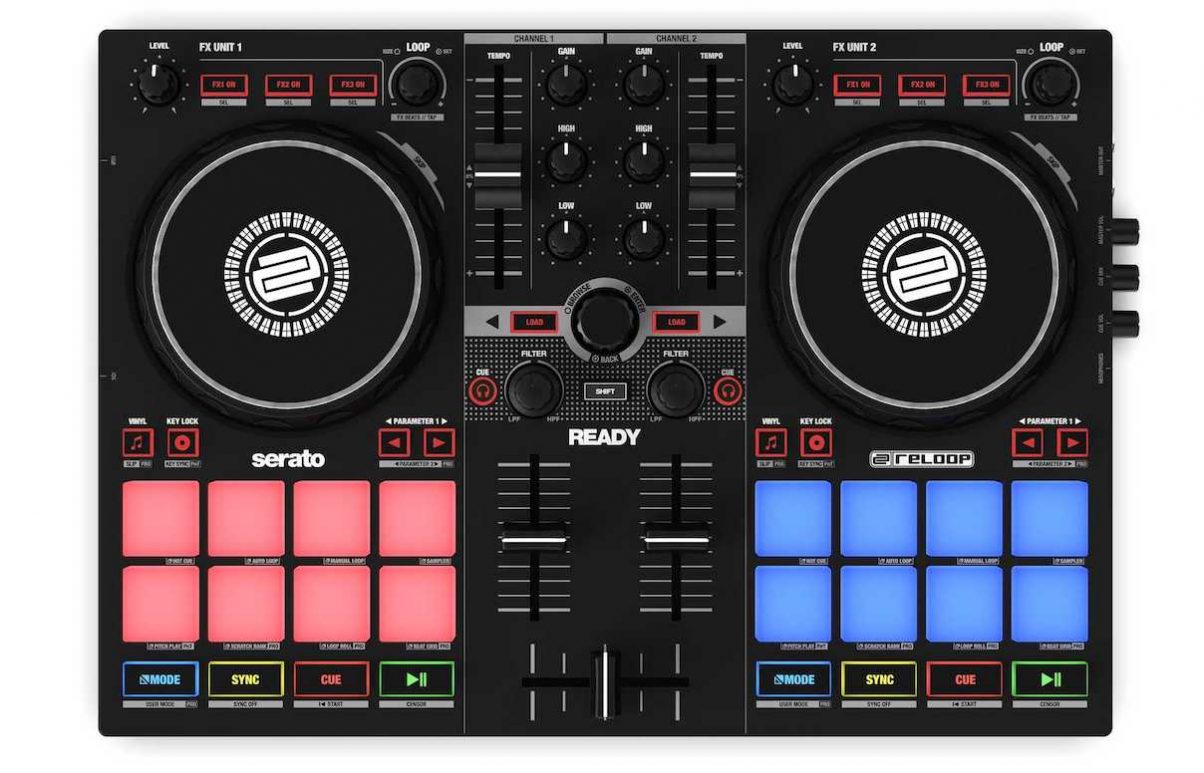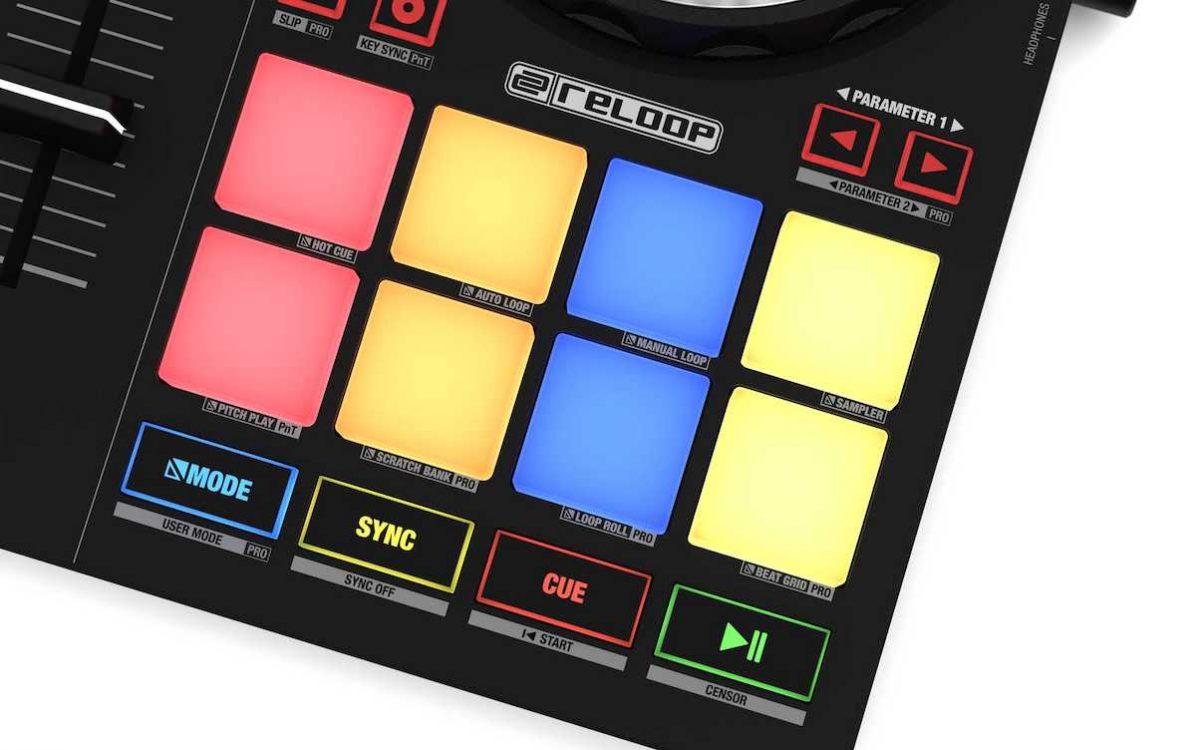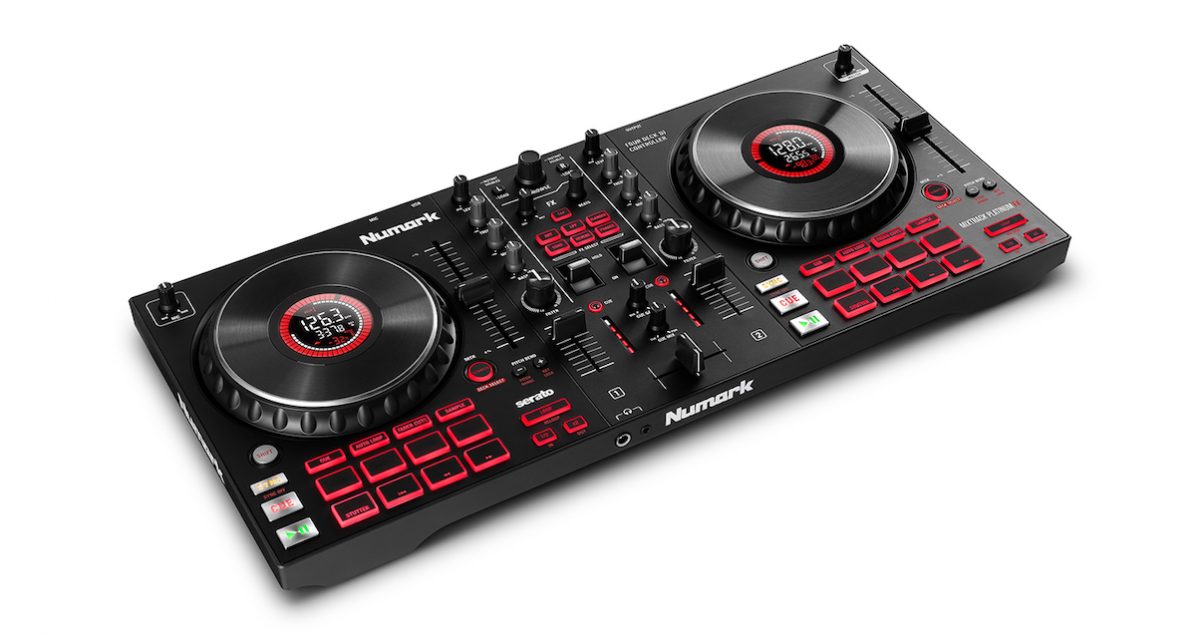The Lowdown
The Reloop Ready is a small, well-featured controller for Serato, designed to be used as a preparation controller or a compact performance controller. While ultimately it’s a consumer-grade device, it has control over practically everything in Serato, making it unique for this size and price point. It’s let down by its dim pad lights, and its price means it wouldn’t be a great choice for a beginner DJ. Ultimately it’s a niche product, albeit an appealing one.
Video Review
First Impressions / Setting up
Having already seen the Reloop Buddy, the cuteness of the two-deck Reloop Ready Serato controller was not such a surprise to us, but it is a sweet little device, small enough to sit over the keyboard of a 13″ laptop to give you a really small DJing set-up.
It has full-sized performance pads which is unheard of at this level and in a controller this size, which has been achieved by moving the tempo faders up to the left and right of the mixer EQs. This is the boldest design choice with this unit, as this has never been done before.

Everything is necessarily a bit fiddly, but that’s the trade-off for having pretty much all the controls you could ask for, including full control over both Serato FX engines, filters, two (not three) band EQ, gain controls, loop encoders, buttons for vinyl mode/slip mode and key lock/key sync, and control over literally all of Serato’s pad modes, including pad parameter buttons.
It is plastic but well built, although the crossfade and upfaders do feel a little cheap. The tempo faders feel better. The jogwheels are small and shallow, but smooth in operation. Ours didn’t sit quite flat on the desk, which is annoying but not uncommon with plastic controllers, and this improved.
Learn to DJ with Digital DJ Tips: The Complete DJ Course
As with the Reloop Buddy, the headphone and master volume controls are on the side of the unit, along with the Cue Mix knob, the 1/8″ headphones socket and the 2 x RCA master output. There are no other inputs or outputs (mic, aux etc).
To set it up, you install Serato DJ Lite or Serato DJ Pro (the latter you have to buy, but is essential to unlock all of the controller’s features), plug in, and after a few seconds the software recognises the controller and you’re ready to go. Note that if you’re a Windows user, you need to install an Asio driver, available from the Reloop website.
In Use
There are no new features of note – no new Serato elements that are unique to this controller as with some controller launches. Really the thing that strikes you using this is how much fun it is to have all this functionality in such a small device.

The pads especially are fun to use, and when you compare it to other similar sized controllers, there is simply no competition. To have things like manual looping, beatgridding, Pitch Play, and even a user assign pad mode available to you would be good on any controller’s pads, but on something this small, it’s amazing.
To change pad modes, you use the “mode” button, which is tucked down as one of the four bigger buttons underneath the pads, along with sync, cue, and play/pause. You hold the mode button down, then tap the pad with the function you want written underneath it. It is a smart way to get around the need for a row of four extra selector buttons over the pads.
Personally, to have Slip mode on the controller is a big plus (many pro gear misses that button off), and I liked having the single-knob loop encoder, too, which is my favourite way of having looping implemented on controllers.
While the EQ is only two-band, I think that’s fine on a small controller – it’s two bands more than you get on some micro devices like this.
Niggles? I didn’t like the tiny headphones volume and cue/mix controls on the side. I understand they had to go somewhere and the top is kind of crowded, but I often adjust my headphone volume and cue/mix, especially when DJing without speakers in the kind of situations this is designed for, and they are fiddly here.

Also the pads are really quite dim – you wouldn’t see them at all in sunlight. And while muscle memory will kick in and you’ll learn what pad to touch with the “mode” button when selecting pad modes, the mode labelling is ludicrously tiny – I know I’m getting old and my eyes aren’t what they used to be, but I defy anyone to read that labelling properly anywhere they can’t get up close to the unit, in good light!
Conclusion
I can see lots of people wanting one of these. Our tutor DJ Angelo loves this unit, because as a performance DJ who has to prepare and practise intricate sets, it lets him do that anywhere.
No controller has offered that until now. But also as I said at the start, nowadays many people are building ultra-small, battery-powered DJ set-ups that they can throw in a bag and take anywhere with them, and the Reloop Ready would be a good controller to have in such a set-up too.
Learn to DJ with Digital DJ Tips: The Complete DJ Course
As a bonus, it also works with Algoriddim’s djay Pro AI software, so you could use it with an iPad or even iPhone, but to be honest, if you wanted to do that you’d be better going for its sister controller, the Reloop Buddy.
One thing I think may hold this unit back from being a bigger success is its price. For just $20 more than the €280 asking price, a new DJ could buy a Traktor Kontrol S2 Mk3, which comes complete with pro software, and is a much more substantial controller.

For much less, a Serato DJ could get a Mixtrack Platinum FX. It actually has far fewer features than the Ready, but that’s by design, because it assumes many DJs don’t want a lot of the controls that have been squashed into the Reloop Ready. Likewise, the Hercules DJcontrol Inpulse 500 is about the same place, and for many DJs would be a better buy – but again, it lacks a lot of the features of the Reloop Ready, especially proper FX control.
Read this next: 5 Best DJ Controllers Under $500
As such I think the Reloop Ready will be a niche product in the market, too fiddly for an “only” controller for most people, and too expensive for a casual DJ taking his or her first steps. But for those who see what it’s trying to do and understand the appeal, it’s out there on its own. It certainly fills a gap.




